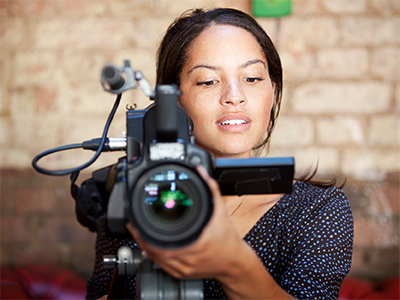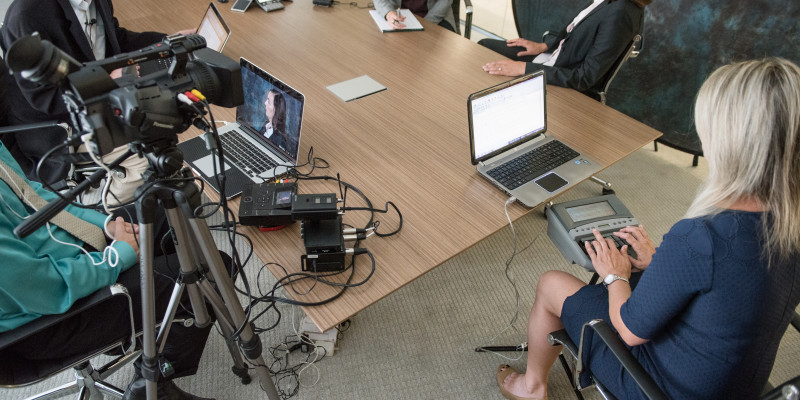The Relevance of Legal Videography for Capturing Important Evidence
The Relevance of Legal Videography for Capturing Important Evidence
Blog Article
Comprehending the Importance of Videography in Legal Proceedings
The integration of videography right into legal procedures has arised as a considerable factor in the presentation and analysis of proof. By capturing aesthetic components such as body language and faces, videography boosts the narrative surrounding witness statements and can exceptionally affect jury perceptions. As the lawful landscape progresses, comprehending its effects on integrity and clearness ends up being necessary for lawful professionals. What best methods should be adopted to optimize its effectiveness, and exactly how might future innovations reshape this important aspect of the judicial process?
Function of Videography in Evidence
Videography plays a progressively important role in legal proceedings, acting as an effective medium for providing proof. The integration of video clip recordings right into the legal framework enables a more dynamic representation of realities, making it possible for jurors and courts to visualize events as they transpired. This aesthetic documentation can incorporate a series of products, including surveillance footage, recorded witness testaments, and specialist demos, all of which can significantly boost the evidentiary landscape.
One of the key benefits of videography is its capacity to catch subtleties that may be lost in composed accounts. Faces, body language, and situational context can offer necessary insights, aiding to share emotions and purposes that text alone can not. The use of video clip evidence promotes a more appealing court room experience, potentially aiding jurors in recognizing complex cases.
As innovation breakthroughs, the quality and availability of videographic proof have actually improved, making it an integral part of modern-day legal methods. Courts progressively recognize the value of video as a trustworthy resource of info, triggering lawful specialists to adapt their methods for proof discussion. Inevitably, videography offers not only to show realities but also to improve the general stability of the judicial process.

Enhancing Trustworthiness and Clarity
A significant benefit of integrating videography in legal process is its capability to enhance both integrity and clearness of evidence offered in court. Videographic evidence can record subtleties that written documents may overlook, such as tone, body movement, and context. This aesthetic depiction allows courts and courts to much better comprehend the situations surrounding the case, thus fostering an extra precise understanding of the occasions in concern.

Furthermore, the clarity afforded by videography minimizes the possibility of false impression that can arise from textual descriptions. This precision is particularly crucial in complicated situations, where information can be conveniently misinterpreted. Inevitably, by providing evidence in a visually available style, videography not only reinforces the integrity of the judicial process yet also supports informed decision-making by those associated with legal procedures.
Influence On Jury Understanding
The incorporation of videographic proof considerably influences court assumption, usually leading to extra involved and notified deliberations. Jurors are commonly a lot more responsive to visual info, which can improve their understanding of complicated instances. Videography offers truths in a manner that is both easily accessible and engaging, permitting jurors to connect with the proof on a more personal level.
Furthermore, the capacity to witness occasions as they happened can evoke psychological feedbacks that created records or spoken testimonies may fail to generate. This emotional engagement can lead jurors to create more powerful opinions concerning the trustworthiness of witnesses and the general story of the situation. The visual depiction of evidence likewise assists in clearing up ambiguities, making it simpler for jurors to understand the context and significance of the information offered.
Additionally, videography can function as a powerful tool for narration, enabling attorneys to construct a convincing story that resonates with the jury. When jurors can picture scenarios and witness vital moments, their capacity to calculated attentively and reach a knowledgeable verdict is substantially enhanced, eventually impacting the end result of lawful proceedings.
Ideal Practices for Legal Videography
Implementing best practices in lawful videography is crucial for ensuring that visual proof is both trustworthy and efficient in the court room. Select qualified specialists that specialize in lawful videography to make certain the technical high quality of the recordings. This includes using high-resolution cams and professional audio tools to useful source catch clear visuals and noise.
2nd, preserve appropriate documentation throughout the recording procedure. This entails developing a thorough log that includes timestamps, summaries of the content, and the identifications of all people existing. Such documentation can reinforce the credibility of the video.

Additionally, think about using ideal editing and enhancing strategies. While it is essential to preserve the initial content, small modifications for quality-- such as enhancing audio levels-- can boost the overall presentation without changing the material.
Future Trends in Legal Videography
As legal videography proceeds to advance, arising methods and technologies are forming the future landscape of visual proof in the court (Legal Videography). One substantial trend is the integration of high-definition and 4K video quality, boosting the clearness and detail of taped testimonies and proof. This enhanced resolution aids jurors in adequately evaluating the credibility of witnesses and the subtleties of today materials
Furthermore, making use of expert system (AI) in video analysis is acquiring traction. AI tools can aid in identifying essential moments in video, producing records, weblink and also assessing non-verbal communication, which provides deeper insights right into witness reputation. Virtual reality (VR) and boosted fact (AR) are positioned to change how evidence is provided, enabling jurors to submerse themselves in criminal activity scenes or circumstances, consequently cultivating a more profound understanding of the context.
Verdict
In recap, videography functions as an essential tool in lawful proceedings, improving the discussion of proof and improving the overall understanding of situations. By catching non-verbal signs and boosting the reliability of witness accounts, videography substantially affects court perception and decision-making processes - Legal Videography. Sticking to best techniques makes certain the efficiency of legal videography, while emerging patterns promise to additional boost its duty in the judicial system, inevitably cultivating an extra educated and involved legal setting
Videography plays an increasingly essential duty in lawful process, offering as an effective medium for providing proof.A significant benefit of integrating videography in legal proceedings is its ability to boost both integrity and clearness of evidence presented in court. Eventually, by presenting evidence in an aesthetically available layout, videography not only reinforces the stability of the judicial procedure but also sustains educated decision-making by those included in lawful process.
In recap, videography serves as a crucial device in lawful procedures, improving the presentation of evidence and improving the total understanding of other situations. Legal Videography. Adhering to best practices ensures the performance of lawful videography, while arising patterns promise to further boost its function in the judicial system, eventually fostering an extra educated and engaged lawful atmosphere
Report this page